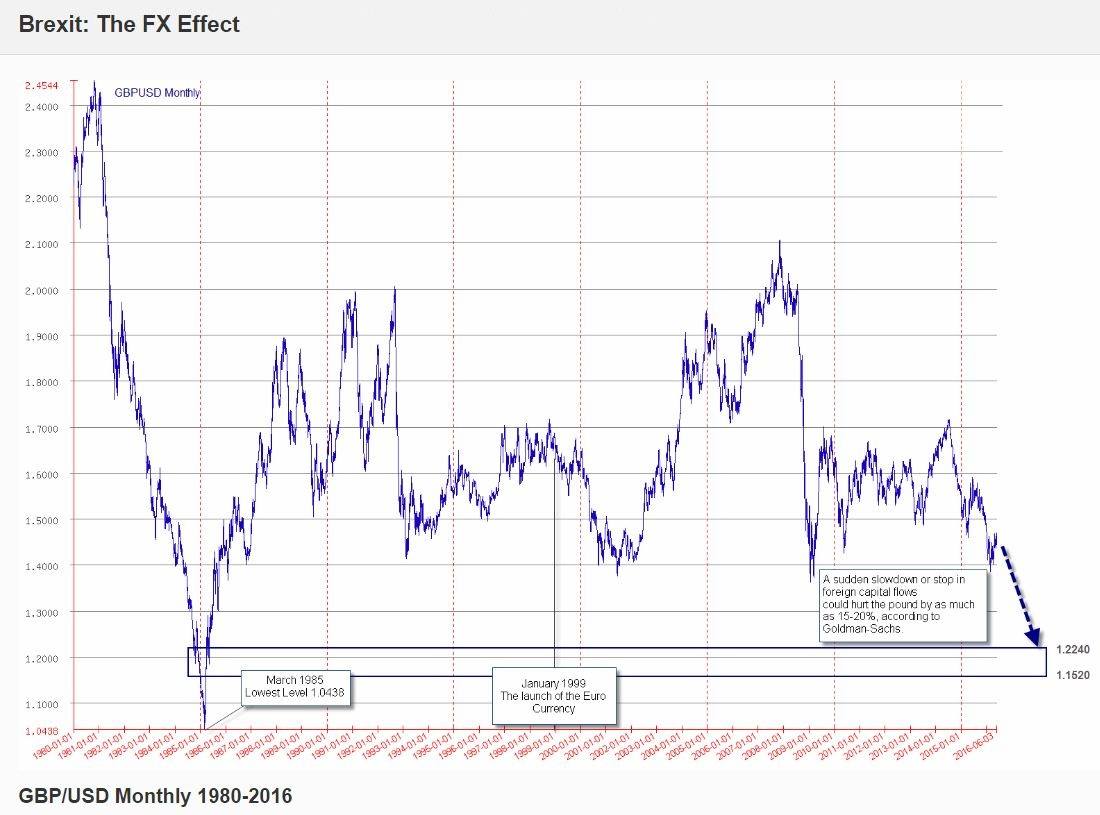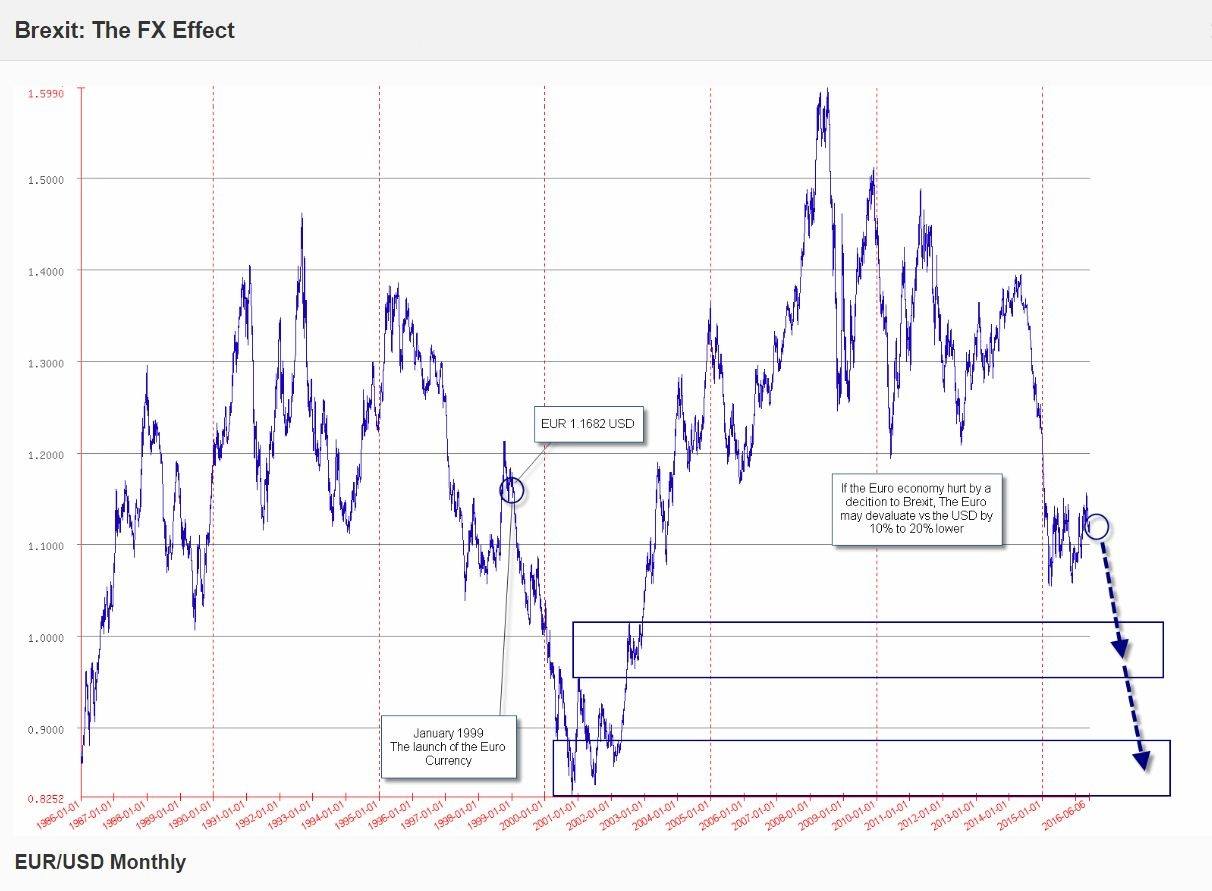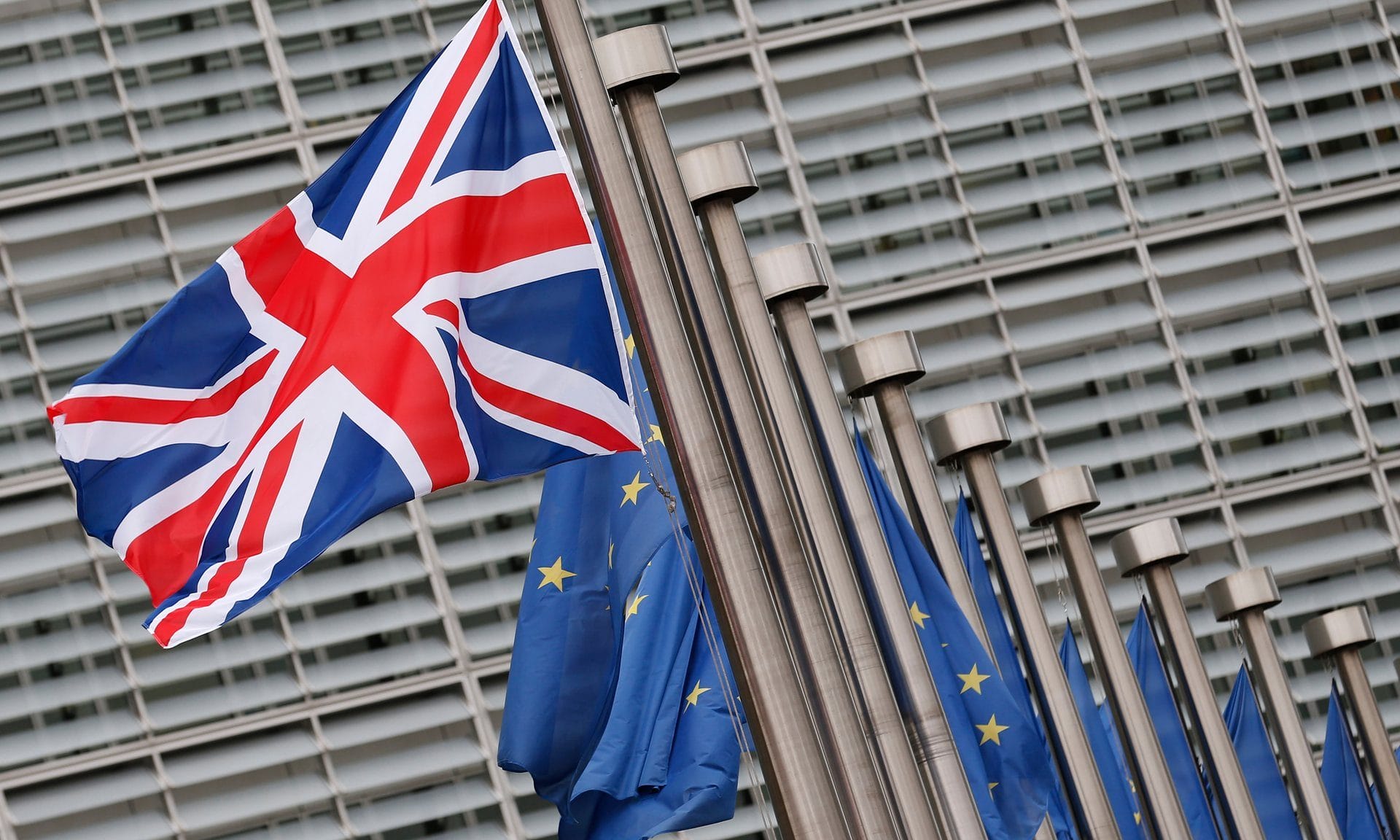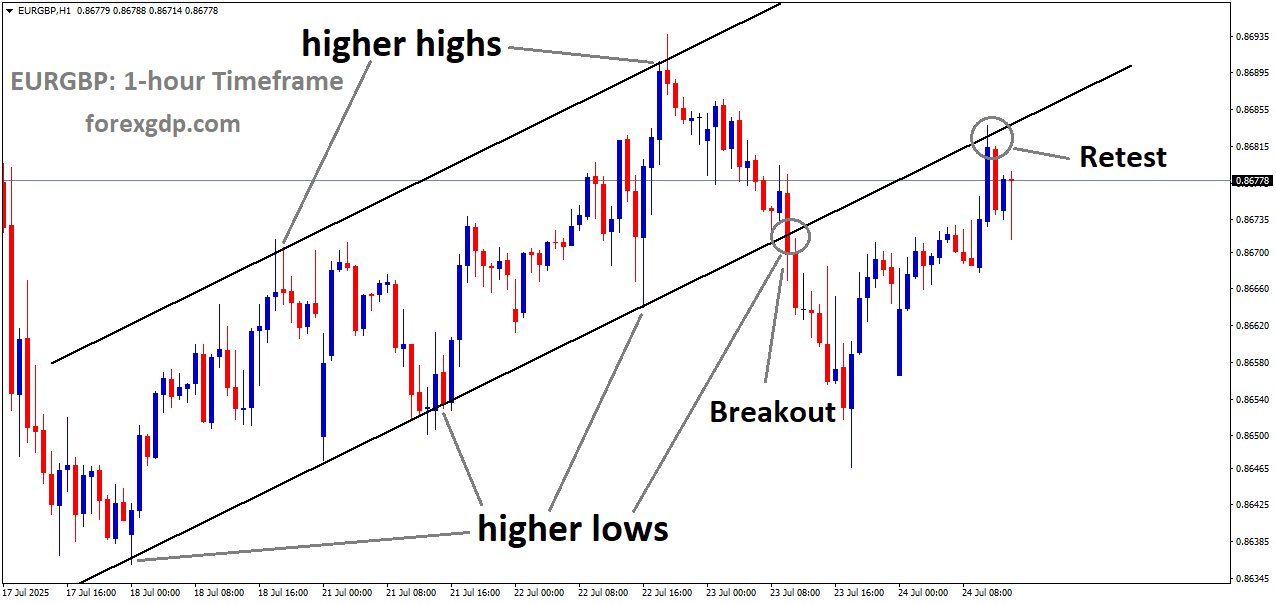What is “Brexit” ?
The European Union’s political and economic future could be reshaped by the UK’s June 23-scheduled referendum vote regarding whether Britain should retain membership in, or exit, the EU. Popularly known as ‘Brexit’ – shorthand for Britain Exit—the vote outcome could have far-reaching consequences for not just the British and Eurozone economies, but also for global currency and equity markets in particular.

If the Brexit referendum outcome calls for a UK exit of the EU, sterling’s value could plummet in the aftermath, to some degree because of the expectation there would be a sudden slowdown or stoppage in foreign capital flows as EU trade agreements are nullified. According to Goldman Sachs this could hurt the pound by as much as 15-20%.
Technical analysis of the GBP/USD chart suggests the same. Taking the long term view (since we’re dealing with massive macro influences), we can see on the chart above that the current value of the GBP is at the lower end of its range over the past thirty years.
Its lowest level occurred during March 1985, at 1.0438. Should the GBP drop in response to the UK leaving the EU, ultimately its support levels could be at ranges that have not been tested for more than 30 years.
In such a case, we would identify the start of the next immediate support level at about 1.22. Support at this level does indeed give credence to Goldman’s gloomy prediction.
While it seems evident that a Brexit will affect the pound, the EURO might also take a hit following the breakup. The UK’s exit could sow new seeds of instability in the region, especially among Eastern European countries that are already unhappy with the EU’s handling of the Syrian refugee crisis. Should the UK exit, many—if not all—of these countries might decide to follow the UK’s lead and leave as well.
Additionally, the UK’s departure might also damage the EU’s recovery from its own debt crisis, as revenues from remaining member states shrink. It would make sense then that the crumbling of the European Union would be disastrous for its currency.

In this scenario, we see the possibility of a 5-10% euro devaluation versus the dollar. Once the past year’s support levels are broken, the next stop down would be parity—a critical psychological level where the euro and dollar would be equally valued.
The last time the EUR/USD stood at 1.00 was in late 2002. It rose steadily over the years since than, until it hit a high of 1.5990 during July 2008.
In the most dire scenario—should the euro break support at 1.00—there is a possibility the currency could go all the way down to retest its lowest lows, between 0.88 and 0.8252. This is highly unlikely. However, it may occur in the event of a domino effect following the UK exiting the EU. To hedge against this doomsday scenario, many FX analysts recommend the yen and Swiss franc as safe havens.
If you like to receive the best forex signals at good trade setup, you can Try free forex signals. (or) if you need additional important trade signals with high accuracy, Join now in Supreme or Premium forex signals plan.
If you want to learn trading from 20+ years expert traders, Join forex trading course online now.
Thank you.





